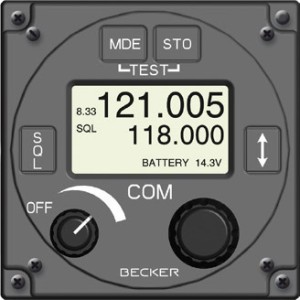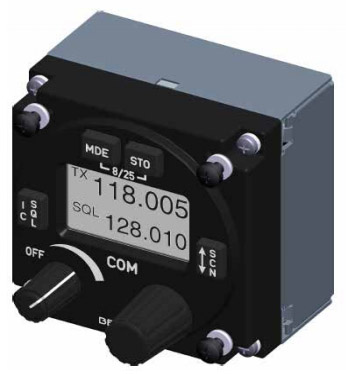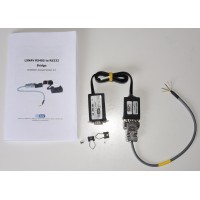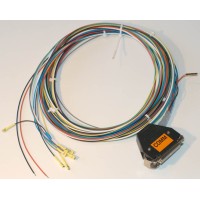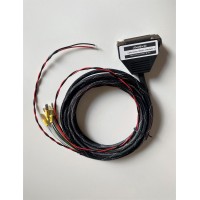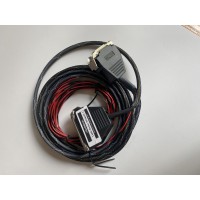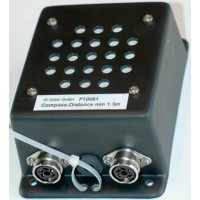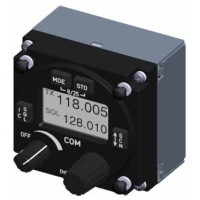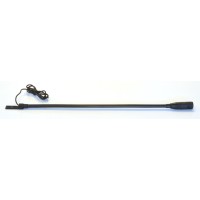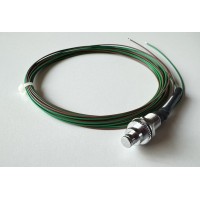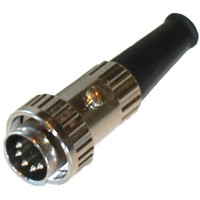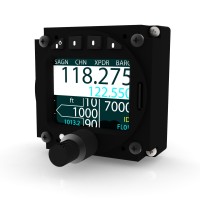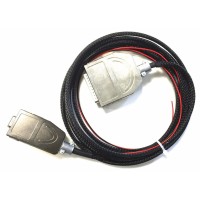Becker AR6201-022 Compact VHF/AM Transceiver (Panel mounted aviation radio) with 8.33 kHz channel spacing
This version of the AR6201 can be setup for either 25 kHz or 8.33 kHz spacing. 25 kHz spacing is the standard in the USA at this time. The 8.33 kHz spacing is required in Europe and offers 3 times as many frequencies. The FAA has not announced any plans to go to the 8.33 kHz spacing. At this time the 8.33 kHz spacing is not recommended or allowed in the USA. At some time in the future the FAA will probably adopt and require the 8.33 kHz spacing - making this radio "future proof" (to a certain extent).
Note: Above is the slightly lower cost version of this radio which is identical to this radio - except that it offers the 25 kHz spacing only.
This radio is extremely popular for use in sailplanes. The small size, low current drain, excellent quality, low voltage operation, and large, clear graphical display make it ideal. You can find lower cost, lower quality radios, but you will probably end up paying more for them in the long run with repairs and down-time. Wouldn't you rather have a radio that just always works! This radio is worth the investment.
The hottest feature of this radio is its "Scan Mode". In scan mode (also called dual watch function) the device can monitor two frequencies (active and preset) at the same time. An arrow points to the frequency (active or preset) from which the audio is derived. The active frequency has priority. If a signal is received on both frequencies at the same time, you will hear the transmission being received on the active frequency - and the preset frequency is inverted and blinking - to indicate that you are missing the transmission on the preset frequency.
The AR 4201 VHF-AM transceiver has, for decades, been the very synonym for reliability. More than 18,0000 units have been sold over the last 20 years. The unit has proven to be a trustworthy companion for thousands of pilots flying millions of flight-hours. For many it will be difficult to acknowledge that this legendary radio is becoming technical history.
But there is good news. Becker Avionics International has launched a successor that represents a quantum leap forward in performance, technical sophistication and robustness.
The Becker-AR6201 VHF-AM transceiver is smaller and lighter than its forerunner due to the implementation of state-of-the-art DSP (Digital Signal Processing) technology. It is mountable in a 2 1/4 inch (57 mm) standard instrument panel hole and is equipped with a highly efficient AM-transmitter, a very sensitive receiver and a full graphic LCD display that allows for easy reading under all light conditions, including full sun. Push button and display illumination can be dimmed. The AR 6201 is, of course, prepared for 8.33 kHz spacing that will become the new international standard for airborne communication. Switching between the 8.33 and the 25 K mode is therefore made effortlessly simple. Standard or dynamic microphones can be used. A built-in test facility increases flight safety. The dual monitor mode that allows scanning of two different channels is an extra feature.
The AR 6201 will continue the Becker airborne radio success story far into the 21st century. It has been certified in accordance to ETSO-2C38e; TSO-C189a.
The wiring connections on the AR 6201 are identical to the connections on the AR 4201 - so AR 6201 units can directly replace AR 4201 units without any rewiring. Also, the existing wiring harness and other accessories will work great with the AR 6201.
| Frequency Range: | 118.000 MHz to 136.990 MHz |
| Channel Spacing: | 8.33 or 25 kHz |
| Channel Selection: | 8.33 or 25 kHz (selectable) |
| RF-Output Power: | > 6 Watts |
| Receiver Sensitivity: | > 12dB sinad for 1 uV |
| Input Voltage Range: | 9 to 36 VDC |
| Operating Temperature Range: | -20° C (-4° F) to +55° C (131° F), for a short time up to + 70° C (158° F) |
| Current consumption: | Transmit: 1.2 A @ 12 VDC Receive/Standby: 85 mA @ 12 VDC |
Manuals, Quick Start Guides, and Brochures
http://www.becker-avionics.com/downloads/
Becker Complete Systems
Complete Systems
Below are a few examples of complete example systems with all the necessary parts.
Becker AR6201-8p33kHz Glider Radio System - Single Seat Glider
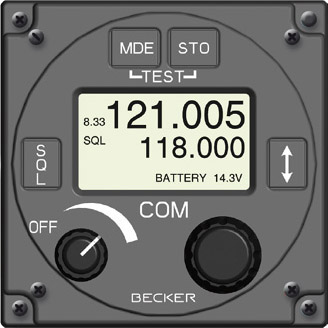 | 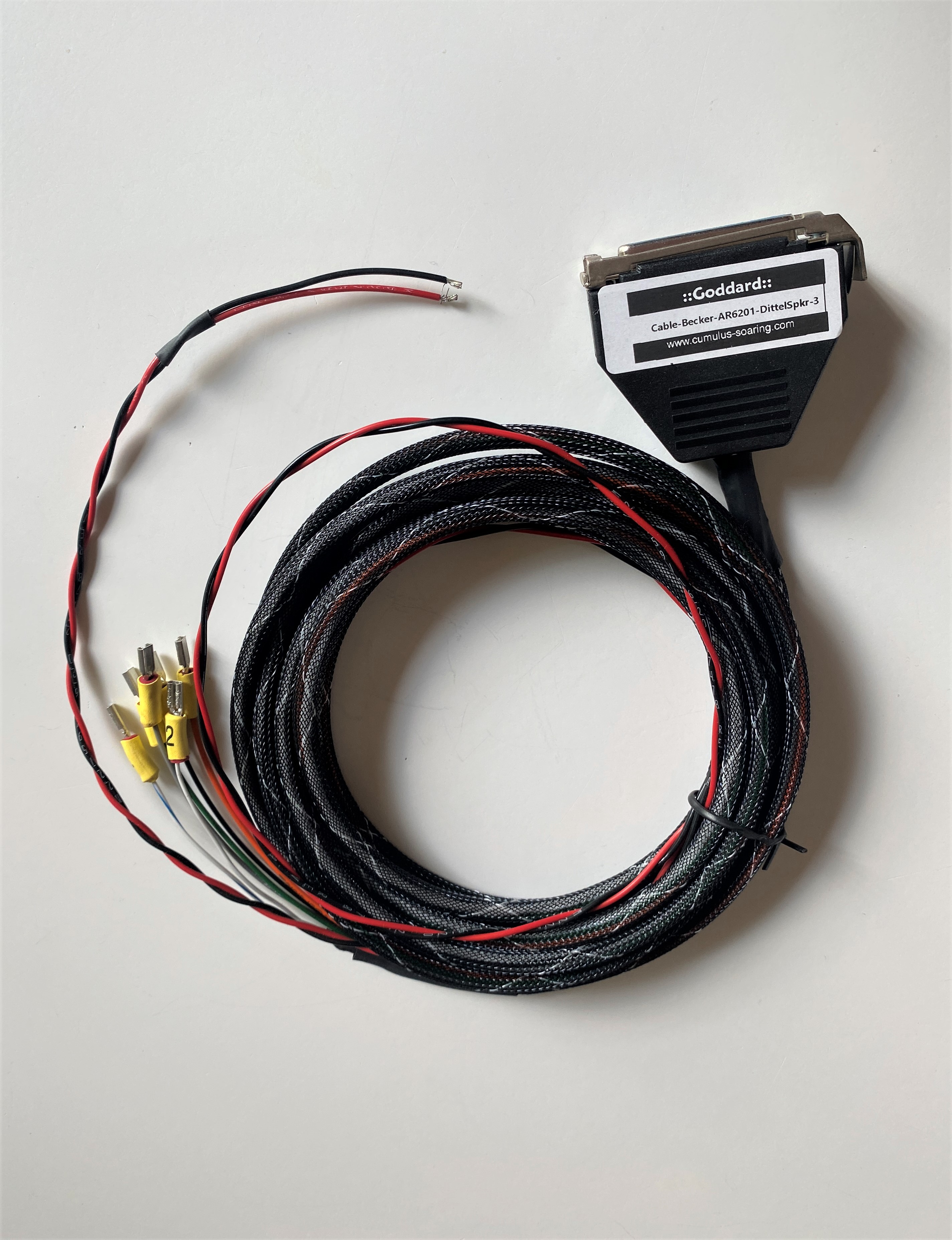 | 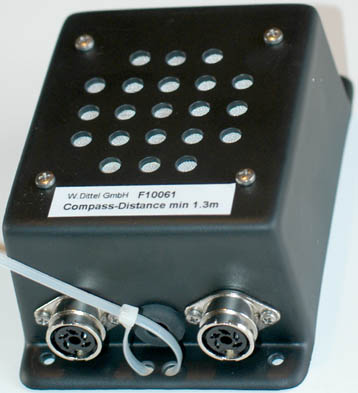 | 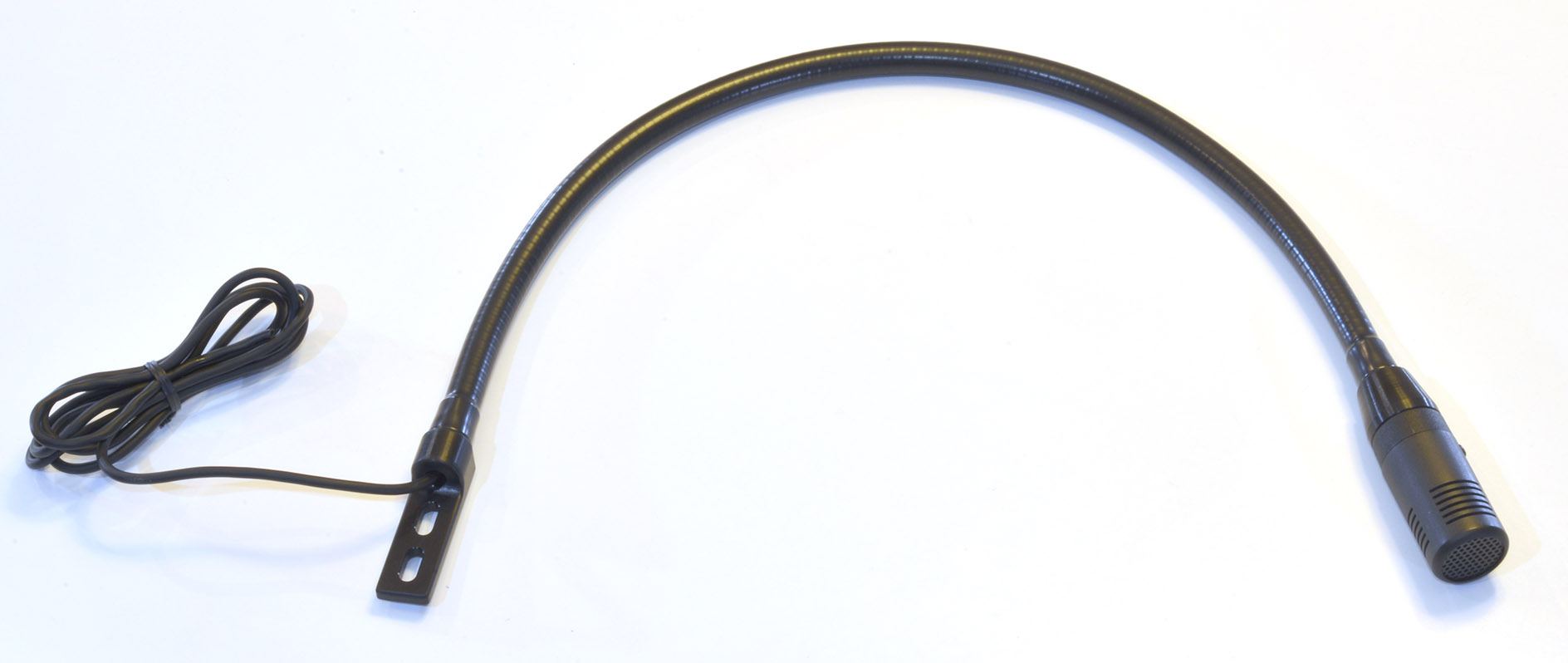 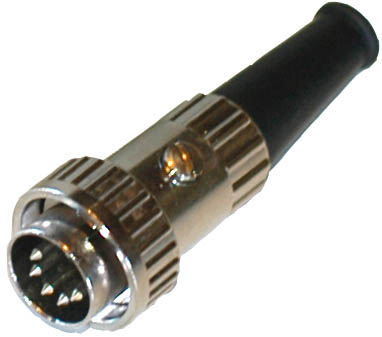 | 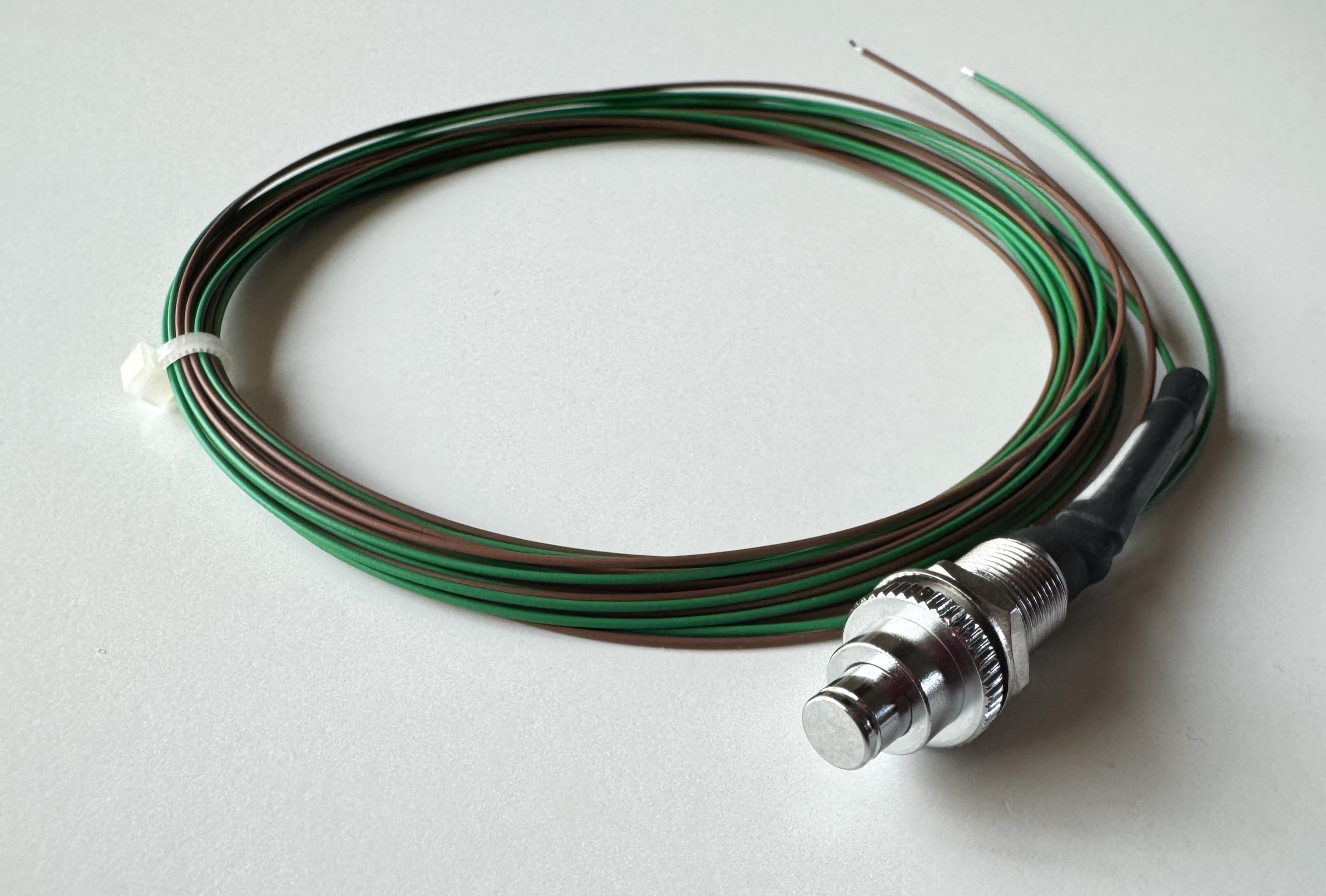 |
| Becker-AR6201-8p33kHz Panel Mount Aviation Radio with 8.33 kHz channel spacing | Goddard Cable-Becker-AR6201-DittelSpkr-3 | Dittel F10061 Speaker/Junction Box | Peiker TM170-23in and DIN-5m-240 | Dittel-F10050 Push-to-talk Button with cable |
- Becker-AR6201-8p33kHz - Compact VHF/AM Panel Mount Transceiver, $1395
- Goddard Cable-Becker-AR6201-DittelSpkr-3 - Wiring harness for connecting radio to Dittel F10061 speaker junction box , $195
- Dittel F10061 Speaker/Junction Box, $165
- Peiker TM170-23in Gooseneck Microphone, $240, with DIN-5m-240,$15
- Dittel-F10050 - Push-to-talk button with wires, $45
- Antenna - Usually built into the glider. If not, there are some nice options here: Antennas.
- Antenna Cable - Usually built into the glider. Several cable options are available here: Goddard. This cost in not included in the total below.
Total: $2055
Becker AR6201-8p33kHz Glider Radio System - 2-Seat Glider
 | 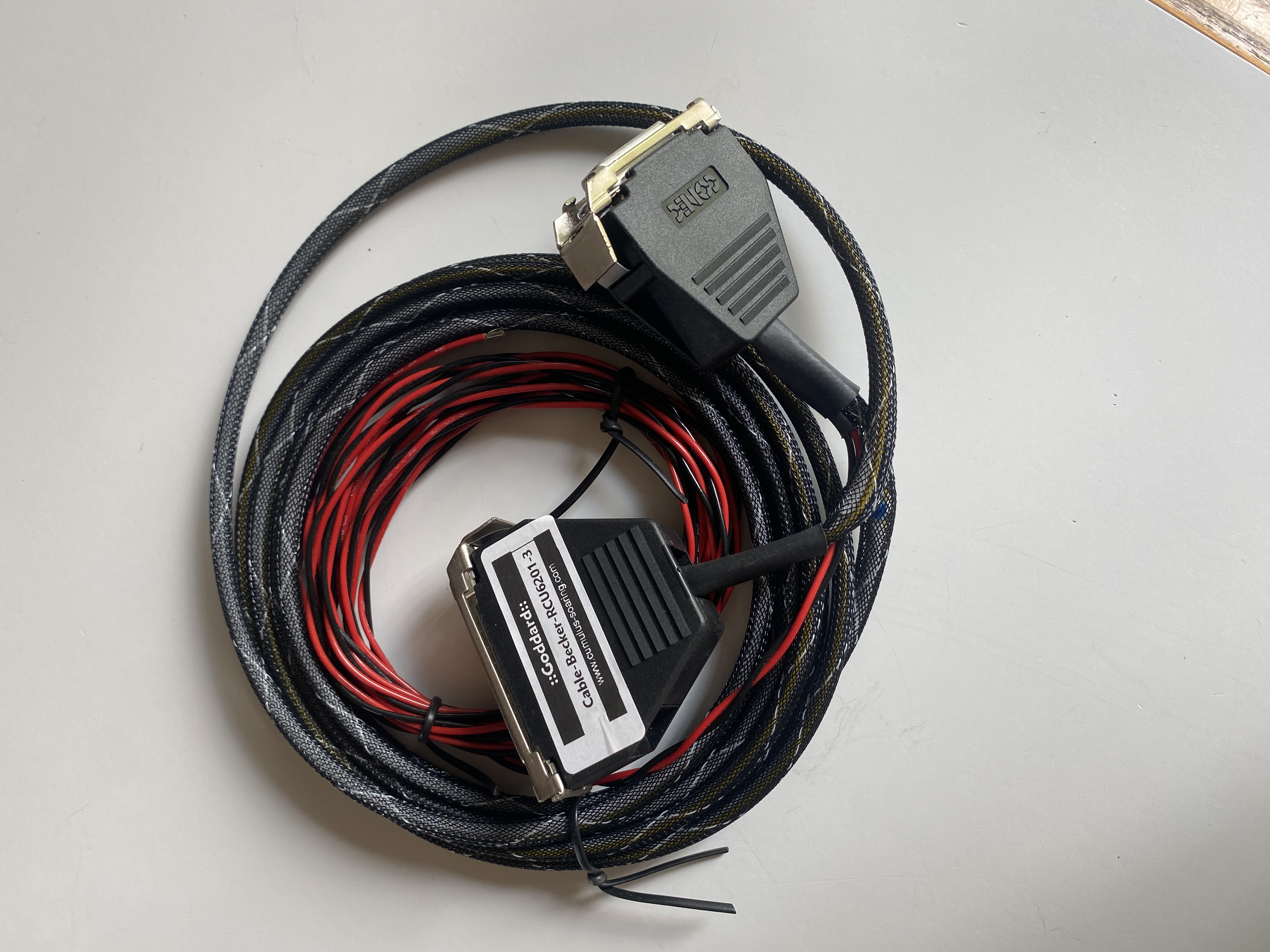 |  |     |   | ||
| Becker-AR6201-8p33kHz Panel Mount Aviation Radio with 8.33 kHz channel spacing | Goddard Cable-Becker-AR6201-DittelSpkr-3 Cable from "J1" connector on radio unit to "P1" connector on RCU6201 remote control unit | Becker-RCU6201 radio remote control unit | Goddard Cable-Becker-RCU6201 | Dittel F10061 Speaker/Junction Box | 2x Peiker TM170-23in and DIN-5m-240 | Push-to-talk Button with cable |
- Becker-AR6201-8p33kHz - Compact VHF/AM Panel Mount Transceiver, $1395
- Goddard Cable-Becker-RCU6201 - Cable from "J1" connector on AR6201 or RT6201 radio unit to "P1" connector on RCU6201 remote control unit, $105
- Becker-RCU6201 - Radio remote control unit, $865
- Goddard Cable-Becker-AR6201-DittelSpkr-3 - Wiring harness for connecting radio to Dittel F10061 speaker junction box , $195
- Dittel F10061 Speaker/Junction Box, $165
- 2 x Peiker TM170-23in (2 x $240) microphones and 2 of the DIN-5m-240 connectors (2 x $15)
- 2 x Dittel-F10050 - Push-to-talk button with wires, 2 x $45
- Antenna - Usually built into the glider. If not, there are some nice options here: Antennas.
- Antenna Cable - Usually built into the glider. Several cable options are available here: Goddard. This cost in not included in the total below.
Total: $3323
Related Products
LXNAV-Bridge-Becker
LXNAV Bridge-BeckerThe LXNAV Bridge-Becker connects a Becker AR6201 radio to the LXNAV RS-485 bus of..
$310.00
Goddard-Cable-Becker-AR6201-SpBox-3
Cable, 3 m (9.843 feet), Wiring Harness for Becker AR4021, AR6201 or RT6201This wiring harness is&nb..
$195.00
Goddard-Cable-Becker-AR6201-DittelSpkr-3
Cable, 3 m (9.843 feet), Wiring Harness for Becker AR4201, AR6201 or RT6201 with Dittel F10061 Speak..
$195.00
Goddard-Cable-Becker-RCU6201
Cable, Wiring Harness for RCU6201 Remote Control UnitUsed to connect the "P1" port on the RCU6..
$95.00
Dittel-Speaker Junction Box
Aircraft Speaker Box and Wire Junction Box4 Ohm, 30 Watt, small, robust case, for 2 mikes or headset..
$165.00
Becker-RCU6201
Becker RCU6201 Remote Control UnitRemote control unit for use with Becker AR6201 or RT6201. Two..
$865.00
Peiker-TM170-23in
TM170 Gooseneck Microphone Assembly - 23 in - Most Popular This is a great dynamic microph..
$240.00
Dittel-PTT Switch
PTT (Push-to-talk) switch for control stickMetal switch with very rugged design and positive click t..
$45.00
DIN-5m-240
DIN Connector, 5-pin, maleFor use with Dittel F10061 Speaker and Wiring Junction Box. One is i..
$30.00
AIR-ACD-57-Altimeter
AIR Control Display, ACD-57 Digital Altimeter and (optional) Radio and Transponder ControllerAIR Con..
$995.00
AIR-ACD-License-Becker
AIR-ACD-License-BeckerAIR Avionics Software License to enable an ACD-57 to control a Becker AR6201 s..
$305.00
AIR-ACD-Cable-AR6201-1m
AIR-ACD-Cable-AR6201-1mCable, 1m, for connecting an ACD-57 to a Becker AR6201 or RT6201..
$185.00
AIR-ACD-Cable-AR6201-3m
AIR-ACD-Cable-AR6201-3mCable, 3m, for connecting an ACD-57 to a Becker AR6201 or RT6201..
$260.00
Tags: Transceiver, radio, Becker

